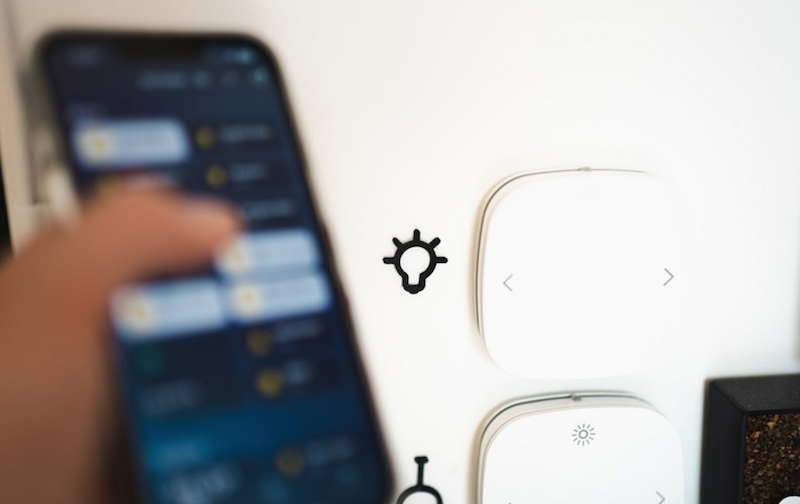In times of stress, a home can be a haven. Smart home automation devices are essential tools for improving quality of life and creating a sense of safety and comfort, even amidst uncertainty.
The small things in life often matter the most. When your four-year-old — or a grandparent — gets up in the middle of the night, it’s a relief to know that the hallway lights automatically dim to 20 or 30% between 10 p.m. and 6 a.m.
Home automation grants peace of mind and control over an environment, and smart home devices can boost energy efficiency and reduce your carbon footprint. This article will focus on how home automation can be customized to make life easier to manage without breaking the bank.
One Size Does NOT Fit All, and That’s a Good Thing
Whether the goal is lower electric bills or improving comfort, there are innumerable ways to implement home automation. Forecasts predict that there will be more than 93 million households using smart home technology by 2027. Each of these homes will have vastly different needs.
Determine what’s most important. Is it a better night’s rest? Light levels affect mood, alertness and circadian rhythm. The right lighting also helps reduce stress and anxiety. Smart home technology introduces the concept of human-centric lighting by lowering light levels when it’s time to sleep and raising them naturally as the sun rises. This simple automation provides a rare peaceful waking experience.
Customize lighting by programming the smart home automation system to change the color of home lighting to mimic nature. Additionally, motion sensors, smart bulbs, and dimmers can be programmed to further improve the level of comfort.
From Self-Care to Creature Comforts
To tailor the aesthetics of the home automation system, program window shades to automatically open when the sun comes up and close at sunset. Devices can be remotely controlled from a phone or through voice commands. Smart home technology offers these improvements to daily life and more.
Smart home automation adds efficiency to simple chores at home, such as notifications when the washing machine stops. A notification can be set up on a phone or voice assistant to announce it anywhere in the house, so your clothes don’t sit too long. A lawn irrigation system connected to a weather app can keep track of rain forecasts to water the lawn on a more accurate schedule. Soil moisture sensors added to key locations in the yard, can also provide a more accurate irrigation schedule, as the system will know to turn on the sprinklers when the ground reaches a certain level of dryness.
How many times have you heard someone in your household say, “Who left the lights on?” We’re all guilty of leaving lights on when we leave a room. A smart relay in a room can automatically turn off the lights after five minutes of no movement in the room. In closets and areas where you typically have short visits, the system can be programmed to the light off after 5 or 10 minutes.
From Convenience to Cost-Saving Steps
Since their inception, smart home products have been designed to save money. Heating and cooling are some of the largest energy expenses in any home. Thermostatic radiator valves can match remote temperature sensors to a radiator, allowing you to make spaces farther away more comfortable. All you need is Wi-Fi to operate them. These devices enable control of home heating in real-time or to run it on a customized schedule that fits a routine.
Home water heaters consume a great deal of energy. An energy meter paired with a contactor can schedule when the water heater runs, track its electrical consumption, and make adjustments to compensate when extra hot water is needed.
Humidity and temperature control sensors detect moisture and enable a comfortable, relaxing environment.
If a utility provider charges Time-of-Use (TOU) rates, scheduling features can make a home more energy efficient. Simple changes such as turning off devices during peak hours when rates are higher can make a dramatic difference. An EV can be charged when electricity costs the least.
Feel More Secure at Home
Besides making energy usage more efficient, home automation can support home security. Smart lighting can activate patterns, making it appear that someone is home even when they’re away.
A home can be observed from any location with indoor and outdoor cameras that send alerts when movement is detected. Keyless smart locks provide a greater level of access control by enabling doors to be remotely unlocked if you need to grant access to someone. Setting up a limited-use entry code for visitors coming to your home when you’re not there can grant additional peace of mind.
The Benefits of Next-Level Building Technology
Intelligent components enable the flexibility to connect different devices to each other and to other systems directly, without needing a cloud, hub, or even the internet. They can be used completely off the grid using only Wi-Fi.
These intelligent products have built-in microcontrollers and web servers with an application programming interface (API) that executes locally. The devices are compatible with existing home automation setups and voice assistants, and work with various ecosystems. The ability for each device to communicate and control other devices makes their capability and customizability virtually endless.
The conveniences that come with smart home automation encourage self-care. With a simple voice command, you can easily adjust the temperature of a room, control lighting, and even play music. This empowering technology lets you find and improve preferred aspects of living in a home.








